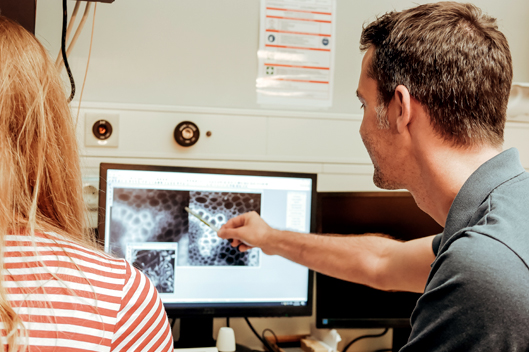For the first time, LMU researchers are pointing out the influence of the internal clock on atherosclerosis. Their study gives an important indication on how the therapeutic approach can be improved.
The internal clock controls all vital functions in the body. Body temperature as well as blood pressure or the release of certain enzymes are subject to oscillations throughout the day, the so-called circadian rhythm. For the first time, a team around Professor Oliver Söhnlein has now shown the influence of circadian rhythms on atherosclerosis - a vascular disease that ultimately can lead to heart attacks and strokes. His study, recently published in the scientific journal Cell Metabolism, could be crucial for the improvement of therapeutic approaches.
Further reading
Zur rechten Zeit gestoppt
LMU-Forscher weisen erstmals nach, welchen Einfluss die innere Uhr bei Atherosklerose hat. Ihre Studie gibt einen entscheidenden Hinweis, wie sich therapeutische Ansätze verbessern lassen.

Die innere Uhr steuert alle lebenswichtigen Funktionen im Körper. Sowohl die Körpertemperatur, als auch der Blutdruck oder die Ausschüttung bestimmter Enzyme unterliegen tagesrhythmischen Schwankungen, den sogenannten zirkadianen Rhythmen. Ein Team um Professor Oliver Söhnlein hat nun erstmals den Einfluss zirkadianer Rhythmen bei Atherosklerose aufgezeigt – einer Gefäßerkrankung, die letztlich zu Herzinfarkten und Schlaganfällen führen kann. Seine Studie, die soeben im Fachjournal Cell Metabolism erschienen ist, könnte entscheidend für die Verbesserung therapeutischer Ansätze sein.

